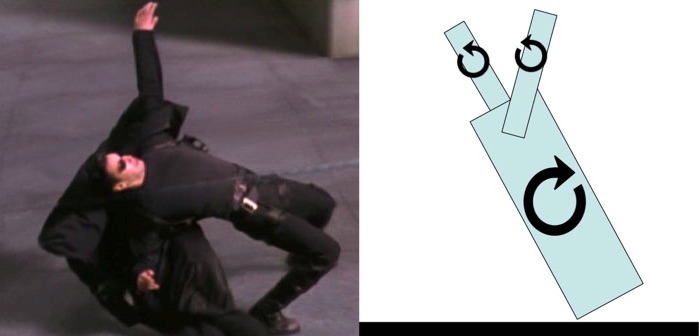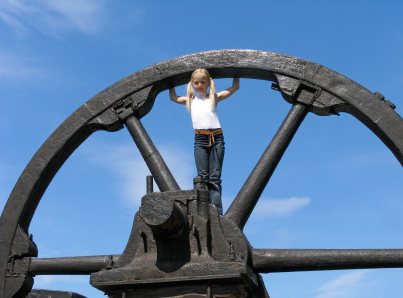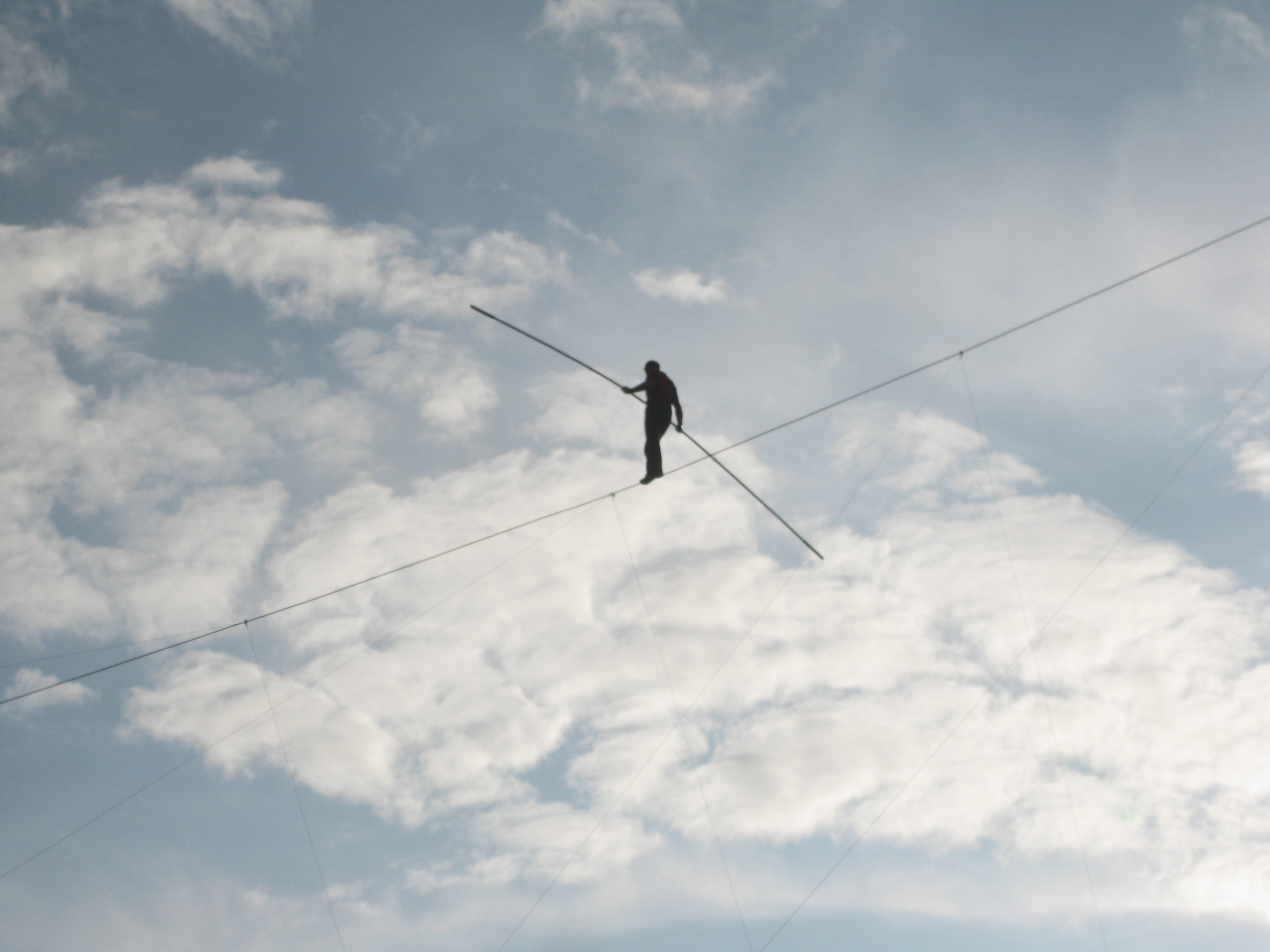The original question was: When I am about to fall backwards I spin my arms up over my head then down . This seems to help in preventing my fall somewhat.
Is this some form of conservation of angular momentum?
Physicist: Actually, it’s some form of conservation of angular momentum.
Assuming you still have at least one foot on the ground, falling over is just a rotation that stops either comically or sadly or both. You start upright and 90° later you’re prone. Everything that moves is subject to the conservation of momentum: if you push something one way, then you’ll be pushed the other way. Similarly, everything that rotates is subject to the conservation of angular momentum: if you rotate something one way, then you’ll be rotated the other way.

Mr. Anderson wants his body to rotate clockwise (to stand back up), so he rotates his arms counter-clockwise. This sort of insight is why it’s so unpleasant to watch movies with physicists.
If you start to fall in some direction, then you want your body to rotate in the opposite direction. Rotating your arms in the direction of the fall causes the rest of you to rotate back to upright.
Someone with gigantic hands and stick-thin-but-long arms would practically never fall over. The more mass you have far from the pivot point (shoulders) the greater the “moment of inertia“. Something with a lot of mass is hard to move or stop (it has a lot of “inertia“). Something with a high moment of inertia is hard to turn and to stop turning. In fact, that’s why flywheels are designed the way they are. Most of their mass is far from their pivot so that they have a high moment of inertia without being ridiculously heavy.
Until we can find the coveted giant-hands-long-arms gene, tightrope walkers will be forced to continue using poles to keep their balance. They use their pole to keep balanced in exactly the same way the rest of us ground-dwellers use our arms. If you can believe it, the search for this gene isn’t a priority for most geneticists.
The same trick we (humans with arms) use to keep our balance is the same trick that space craft use to rotate in space. Here on the ground we can push off of things. If you want to face a new direction, use your feet to push on the ground and voilà: a new vista lays before you (or another wall if you’re inside).
However, space is notable for its remarkable dearth of stuff. There’s nothing in space to push on, so spacecraft engineers (notable for their remarkable plenitude of cleverness) literally provide stuff for their spacecraft to push: flywheels. By turning a tiny flywheel clockwise a lot, the rest of the spacecraft turns counter-clockwise a little.

Turn a wheel in space, and turn yourself. These are from the Hubble space telescope. Hubble would be a whole lot of pointless if it couldn’t point in more than one direction, but it also can’t pollute the space around it with rocket exhaust (avoiding gases is why it’s up there in the first place). So: flywheels.









5 Responses to Q: Why do we (people) wave our arms when we fall? Is it for attention?